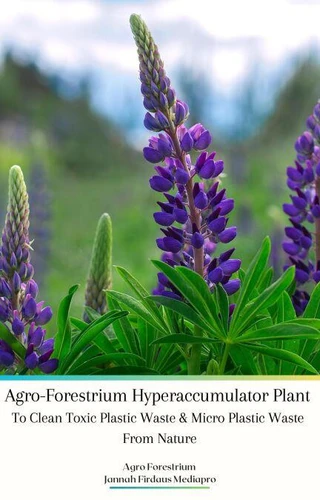Agro - Forestrium Hyperaccumulator Plant To Clean Toxic Plastic Waste & Micro Plastic Waste From Nature
Par : , ,Formats :
Disponible dans votre compte client Decitre ou Furet du Nord dès validation de votre commande. Le format ePub est :
- Compatible avec une lecture sur My Vivlio (smartphone, tablette, ordinateur)
- Compatible avec une lecture sur liseuses Vivlio
- Pour les liseuses autres que Vivlio, vous devez utiliser le logiciel Adobe Digital Edition. Non compatible avec la lecture sur les liseuses Kindle, Remarkable et Sony
 , qui est-ce ?
, qui est-ce ?Notre partenaire de plateforme de lecture numérique où vous retrouverez l'ensemble de vos ebooks gratuitement
Pour en savoir plus sur nos ebooks, consultez notre aide en ligne ici
- FormatePub
- ISBN8227427700
- EAN9798227427700
- Date de parution21/10/2024
- Protection num.pas de protection
- Infos supplémentairesepub
- ÉditeurBig Dog Books, LLC
Résumé
A hyperaccumulator plant is a unique type of plant that can absorb and concentrate high levels of toxic substances from the soil and water. These plants are especially important for cleaning up pollution, including harmful chemicals and microplastics-tiny plastic particles that are difficult to remove from the environment. Hyperaccumulators have specialized mechanisms that allow them to take in these pollutants through their roots and store them in their tissues, often in their leaves or stems.
By growing these plants in contaminated areas, we can help remove toxins and plastics from the environment, essentially using them as natural cleaners. This process is called phytoremediation, and it can make polluted soils and water safer for other plants, animals, and humans. Researchers are studying different hyperaccumulator species to find the most effective ones for cleaning up specific pollutants, making them a promising solution for tackling environmental issues.
By growing these plants in contaminated areas, we can help remove toxins and plastics from the environment, essentially using them as natural cleaners. This process is called phytoremediation, and it can make polluted soils and water safer for other plants, animals, and humans. Researchers are studying different hyperaccumulator species to find the most effective ones for cleaning up specific pollutants, making them a promising solution for tackling environmental issues.
A hyperaccumulator plant is a unique type of plant that can absorb and concentrate high levels of toxic substances from the soil and water. These plants are especially important for cleaning up pollution, including harmful chemicals and microplastics-tiny plastic particles that are difficult to remove from the environment. Hyperaccumulators have specialized mechanisms that allow them to take in these pollutants through their roots and store them in their tissues, often in their leaves or stems.
By growing these plants in contaminated areas, we can help remove toxins and plastics from the environment, essentially using them as natural cleaners. This process is called phytoremediation, and it can make polluted soils and water safer for other plants, animals, and humans. Researchers are studying different hyperaccumulator species to find the most effective ones for cleaning up specific pollutants, making them a promising solution for tackling environmental issues.
By growing these plants in contaminated areas, we can help remove toxins and plastics from the environment, essentially using them as natural cleaners. This process is called phytoremediation, and it can make polluted soils and water safer for other plants, animals, and humans. Researchers are studying different hyperaccumulator species to find the most effective ones for cleaning up specific pollutants, making them a promising solution for tackling environmental issues.







